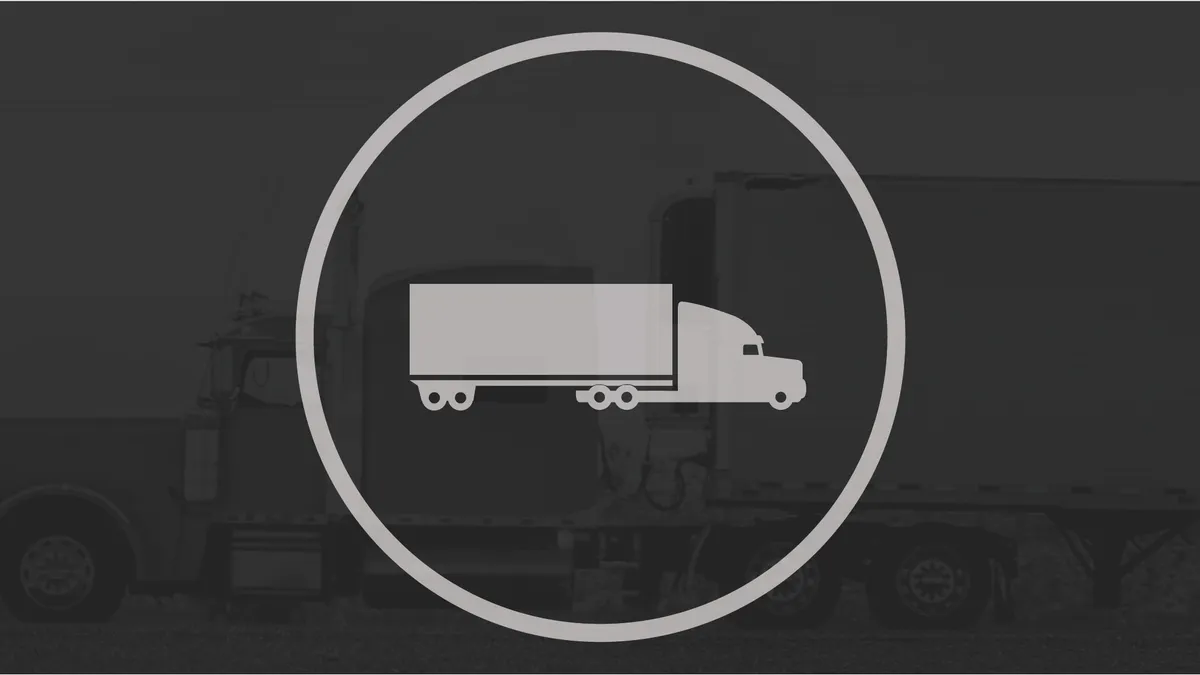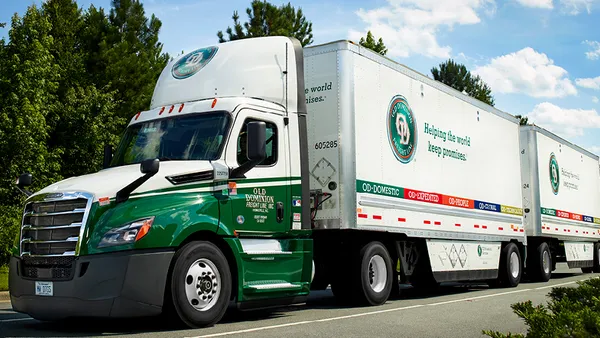Dive Brief:
- Trucking shipments declined slightly from May to June but still posted year over year growth of 7.2%, according to the June 2018 Cass Freight Index Report.
- Expenditures in June, measured as total spending on freight for the month, grew 0.7% from May and 15.9% over June 2017.
- According to the Cass report, the month-to-month changes indicate a strong economy, but "growth may have reached its short-term expansion limit."
Dive Insight:
With expenditures reaching an index of 2.894, shippers collectively are spending nearly three times as much on freight as they did in 1990 (base year).
Trucking costs are increasingly steadily. Spot van rates grew 7.9% between May and June and 29% YoY, according to data from DAT RateView. Spot rates for flatbed and reefer trucks also grew.
While part of the cost increases may be attributed to rising fuel prices, most stems from high demand for trucking coupled with low supply of capacity and drivers. The supply-demand imbalance leaves the ball in the carrier's court when it comes to setting rates and selecting their customers.
Some shippers have sought rail as an alternative to trucking given the tight capacity. Overall, "shippers are willing to pay up for services to get goods picked up and delivered in all modes throughout the transportation industry," Cass said in its report.
Transporting goods has its limits, however, especially given the current state of infrastructure in the U.S. The American Society of Civil Engineers gave infrastructure in the country a grade of D+. The American Association of Port Authorities (AAPA) projects the seaport industry needs $66 billion over the next decade to modernize infrastructure.
"We are seeing signs that the transportation infrastructure has reached its limit, at least in the short-term, to accommodate higher rates of volume growth," the report said.
New York City is attempting to remedy the limits to transportation infrastructure by investing $100 million in its freight distribution system, although the upgrades will span several years.
Without the necessary infrastructure, roads and highways will be unable to support the growing volume of trucking shipments, creating a barrier to further growth in the trucking industry.














